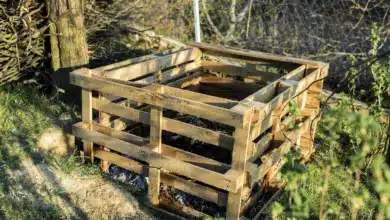20 DIY BIRD FEEDERS
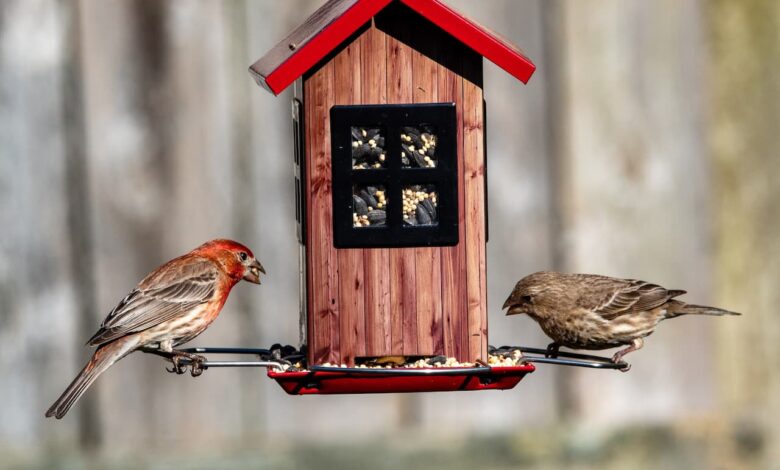
Are you a nature-loving person who wants to make birds feel welcome at your abode? Why not try out a DIY bird feeder and welcome them to play around in your backyard? All you need are some cheap items that can be sourced anywhere, and you’ll have yourself a suitable feeding spot for those winged bundles of joy. Ready up as we show you various DIY ideas that you can follow or use to inspire your own plans.
Color block Bird Feeders
These feeders are made with paint and clear mailing tubes. They are suitable for adding spring color to your backyard.
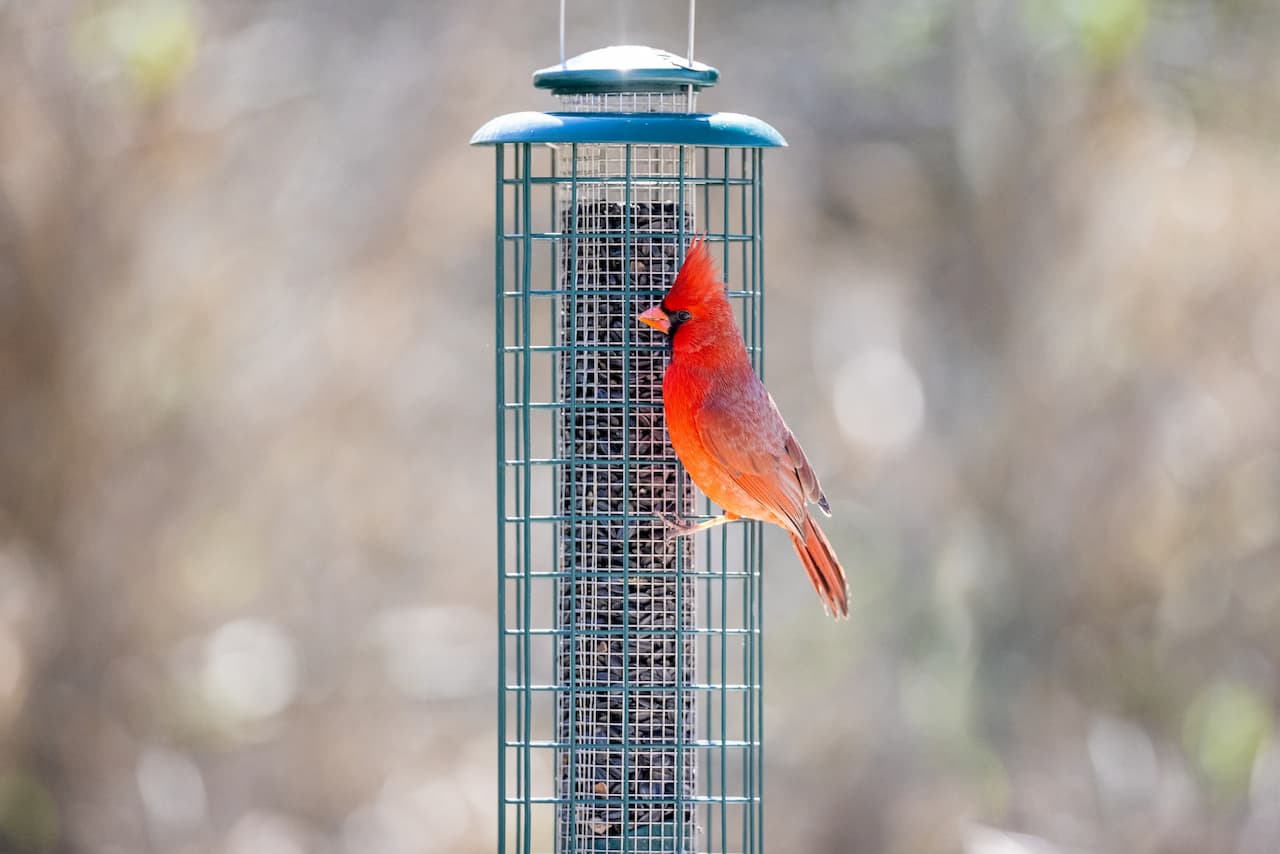
Tin can Feeder
This Bird Feeder is made with a mason jar, tin can, or a can from your recycling bin. Hang it with a ribbon or twine, and do not forget to a perch for the bird.
Tea Cup Bird Feeder
As the name suggests, this bird feeder is made using a tea cup and saucer you are willing to part with, or you can buy one for that purpose.
Plastic bottle bird Feeder
Skewer an empty bottle with two wooden and fill it with birdseed. Be sure to cut larger holes by the mouths of the spoon so birdseed can spill out.
Hanging Plate and Bowl Bird Feeder
Combine a large plate and bowl, and hang ropes from holes created from the plate. The way to do it is to stick the bowl at an angle with glue so the overflowing grain can be scattered across the plate.
Wooden Birdhouse Feeder
If you are interested in woodwork, you can use the most accessible tools to build a Feeder, make a roof with planks and create big holes at the front so the birds can easily get in or out and relax.
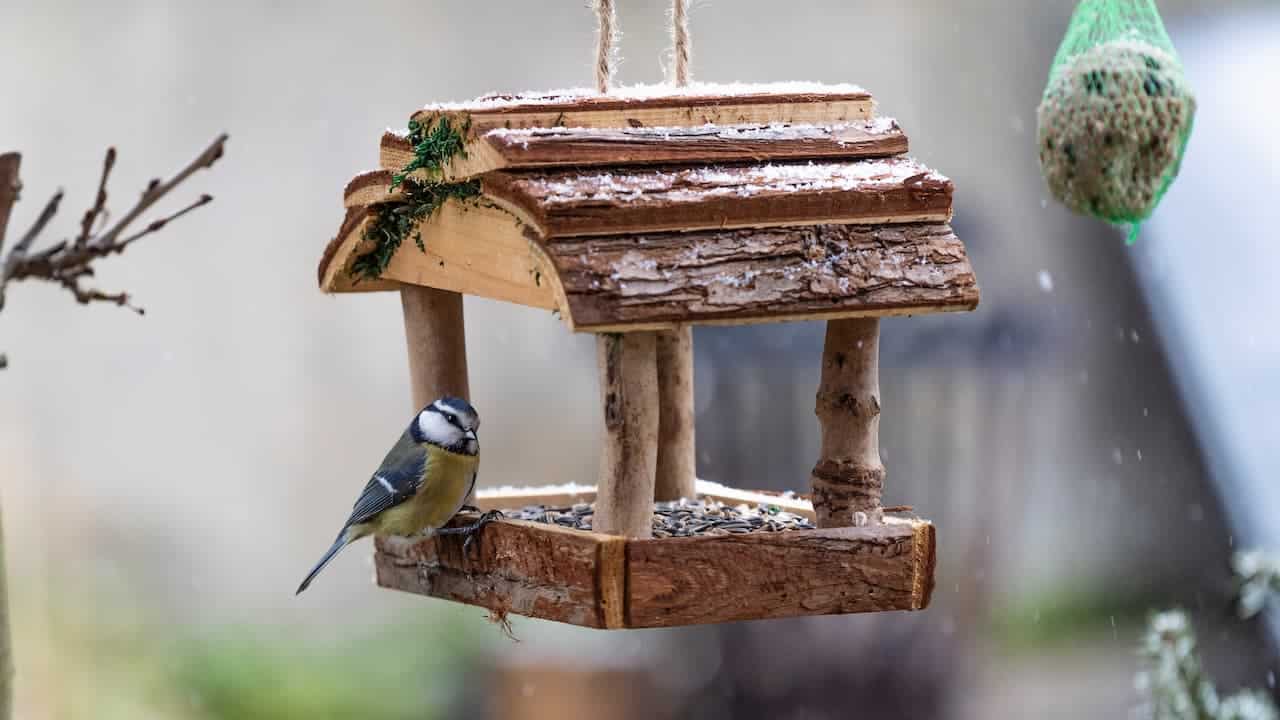
Suet Cakes and Pinecone Feeder
You can make suet cakes by mixing pure peanut butter with bread and then dipping it in a bowl containing the bird seeds. Refrigerate it till it dries up to hang it with wires or strings from the tree branches or balcony.
Egg Carton feeder
You will need an egg carton and a string for an egg carton feeder. The process is simple! Just cut the egg carton in two, puncture a hole in each corner, and tie some strings through opposite corners, so you end up with two loops over the carton. You can use these loops to hook it onto a tree and fill the egg cups with seeds, and you are all done.
Orange Cup Feeder
The next time you have an orange, slice it in half and then take out its fruit. Make a small hole on any side of the skin to tie a loop of string around. The orange skin should be facing up like a basin. Hang the loop over the end of a tree branch and fill it with birdseed, and you have your simple bird feeder that costs virtually nothing.
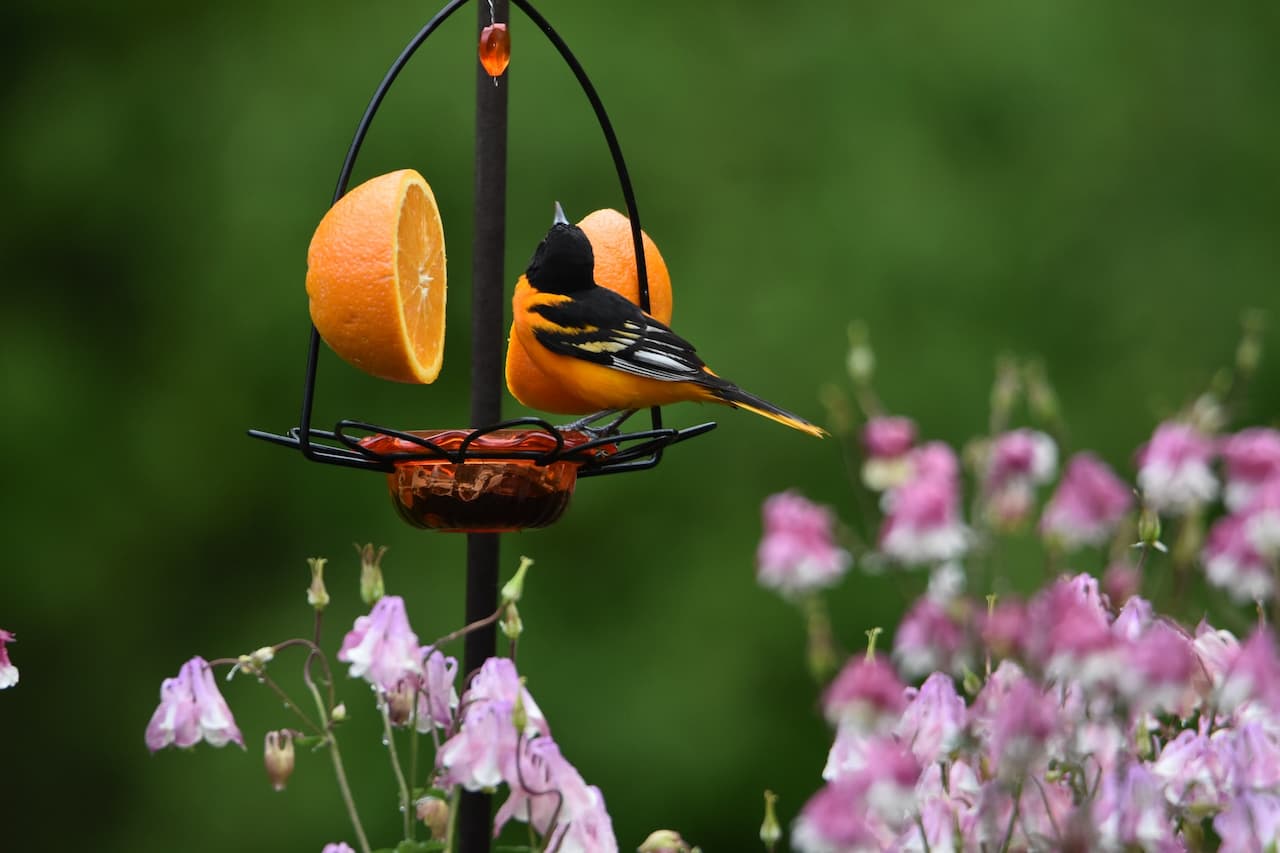
Bird Kebabs
This feeder is fun to make and one of the easiest. You will need a kebab stick, apples, raisins, and Cheerios. Make something tasty for the birds by mixing cheerios, fruit, and raisins onto a kebab stick. Get some string to tie to both ends and hang from a tree when you are done.
Lego Structure Feeder
You can build a Lego Birdhouse from one of your old Lego pieces. Birds are easily attracted; you can create small compartments or cases with the Lego Pieces where birdfeed can be scattered.
Half Coconut Shell Bird Feeder
Coconut shells can be reused after the consumption of the fruit. All you have to do is to clean it up as much as possible and let it dry for a few days under the sun so that it does not attract ants. The two halves can be used together –for holding water and food grains. Drill holes on two or three sides of the coconut shells and put ropes through the holes to hang from the balcony or a tree branch.
Wine Bottle Bird Feeder
Used wine bottles can be reused as bird feeders. Just remove the cap and turn it upside down, attach a plate at the mouth with glue, and hang it upside down with the plate as the base with ropes.
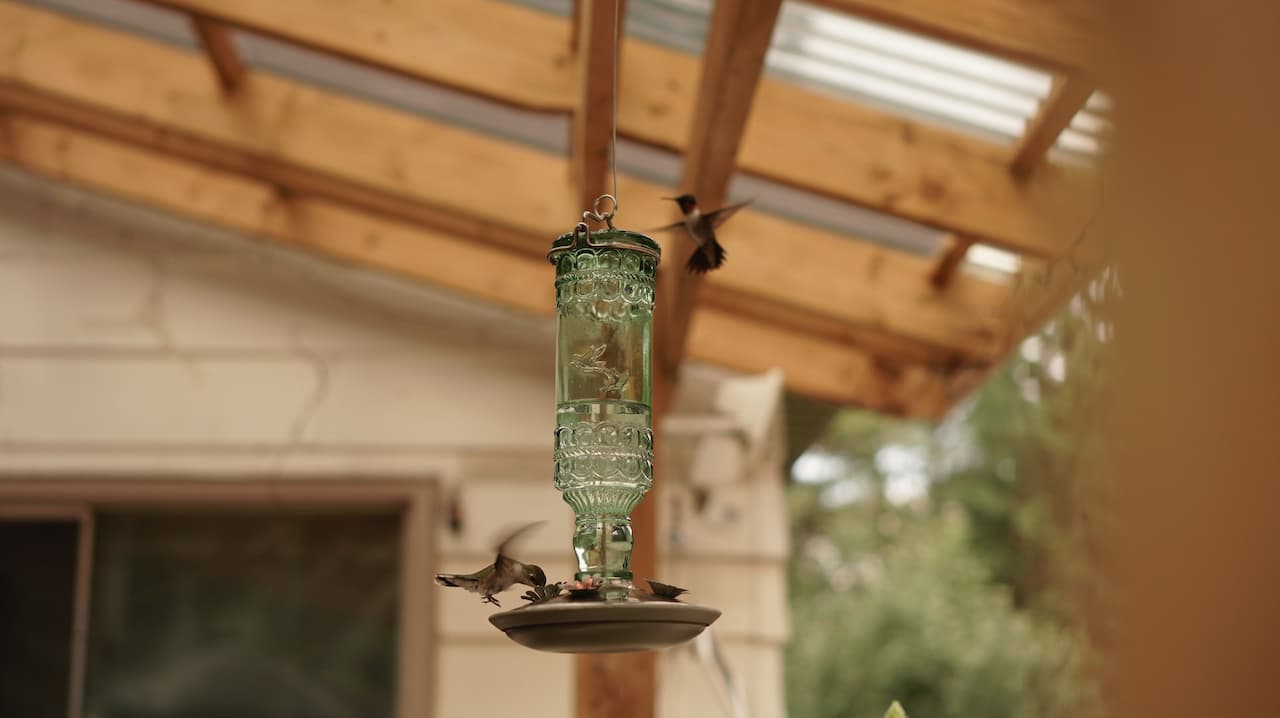
Clay Tray Bird Feeder
To make a pinch-pot as your feeder, purchase a small amount of clay and work the clay until it becomes or resembles a round, shallow tray. Then you let the tray dry then pack it with seeds. You can also repurpose an ashtray if you have any of those lying around.
Mesh Bowl Bird Feeder
If there is a collection of wire mesh containers that are not in use, you can use them for a bird feeder. Take the wire mesh container and attach it to a railing using a rope or string.
Tree Stump Bird Feeder
Check your surroundings for a tree stump for a cost-effective bird feeder that only costs the price of bird seed. If you find one, get a chisel, carve out a small groove into the stump, and place some bird seeds in it. This is as natural as bird feeders get, so you’re sure the birds will love it.
Lard Bird Feeder
Take some room temperature lard or suet to make this feeder and mix in some bird seed. Once mixed thoroughly, roll them into balls around a piece of string, place them on a plate, and then cool them in a refrigerator. When the balls have been set, you can hang them up for the birds.
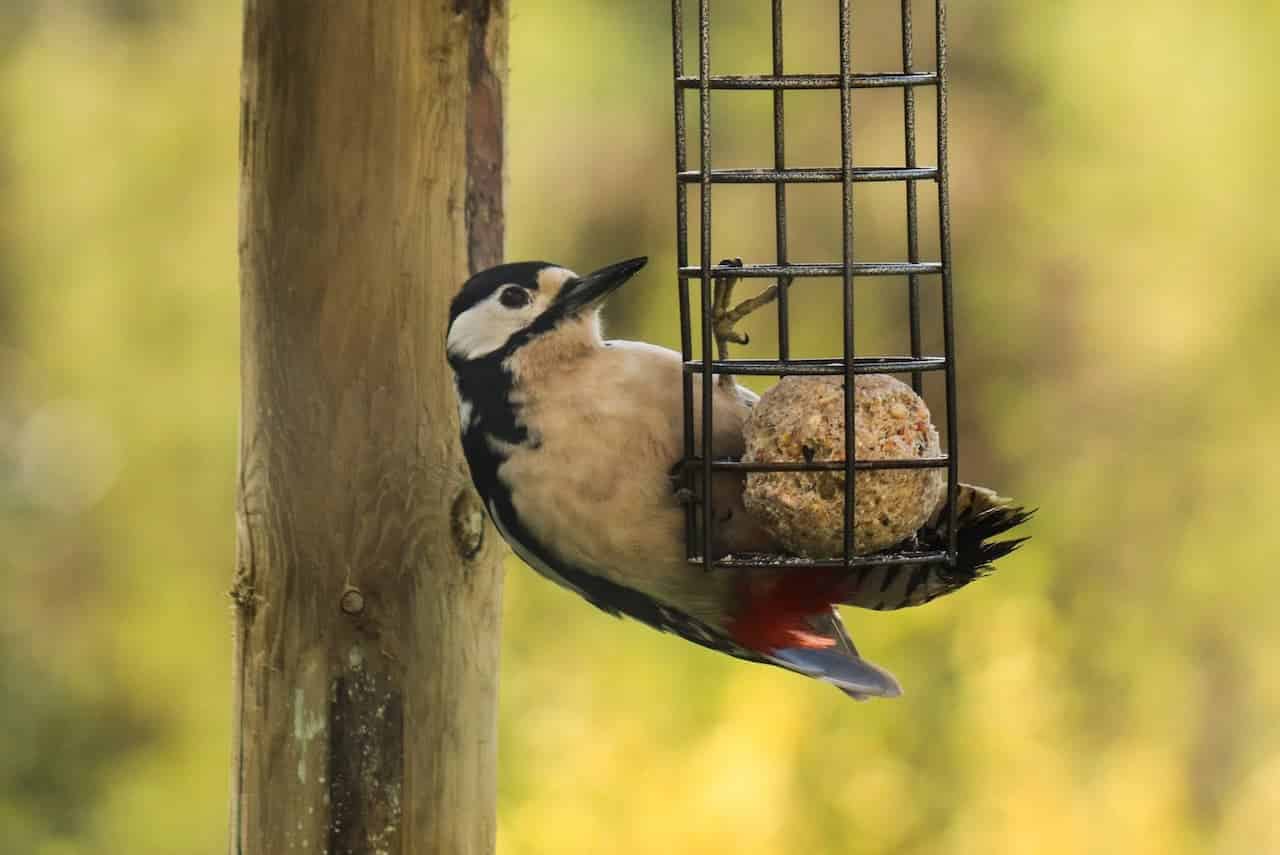
Terra Cotta Bird Feeder
Using a terra cotta flower pot, a bird feeder can look pretty fitting with a garden. You can drill holes in the clay pot, but this is tricky. The best method is to soak the pieces in water overnight to make the drilling easier.
Soup Ladle Bird Feeder
You can get an old-fashioned soup ladle. It has an advantage because shiny metal is a bird attractant. Attach the soup spoon to a wooden board. Use a rope or twine to wrap the bottom half of the spoon to the board or drill two holes at the bottom of the ladle and thread it through and around the bottom from moving.
Paper Plate Feeder
A flat surface is a welcome mat for a bird party. Try to get a wicker paper plate holder. Replace the paper plate every few days with new seeds. To keep the birdseed from blowing away, spread a thin layer of peanut butter along the plate surface, then spread your birdseed on it.
CONCLUSION
After reading our tips on DIY bird feeders, you now have many options to pick from when trying to connect with nature. I hope you got the motivation/inspiration you needed to get on with that bird feeder idea you have in mind.

